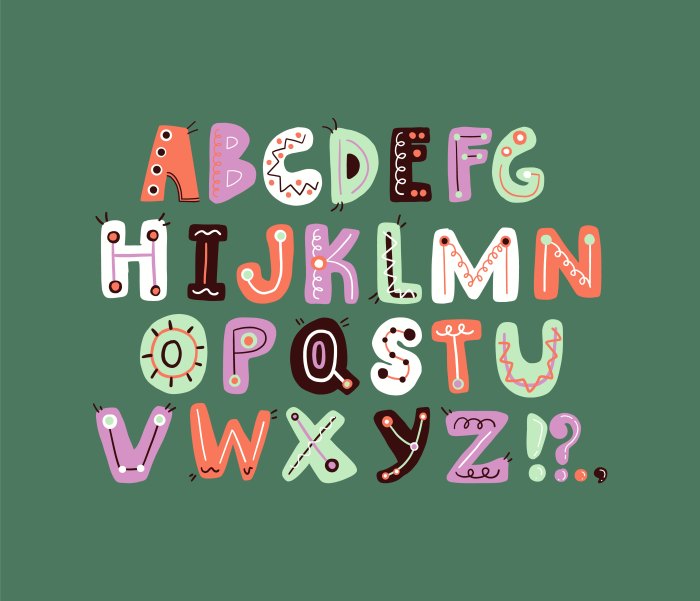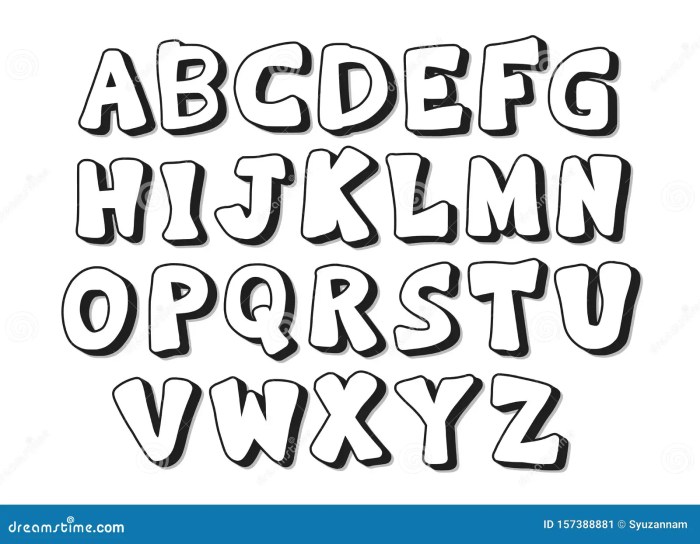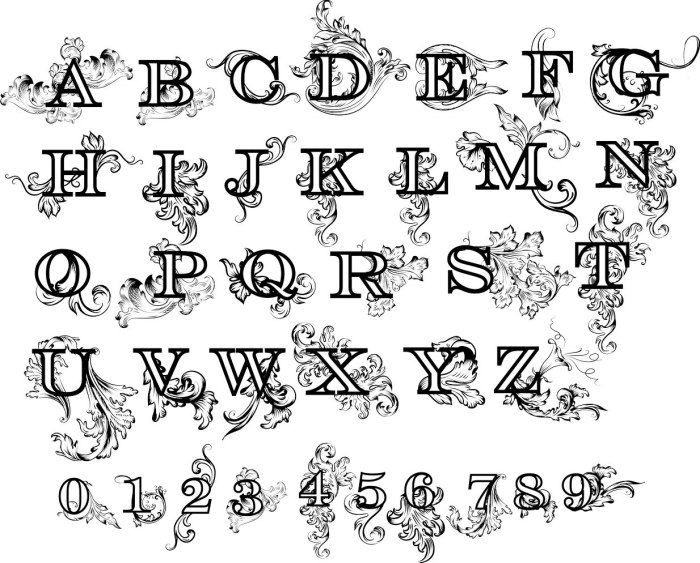Crafting Captivating Letter Designs: A Comprehensive Guide
Letter design is a critical aspect of branding and communication, shaping the way we perceive and interact with written content. From the bold strokes of typography to the intricate details of color and shape, letter design plays a pivotal role in conveying messages effectively across various platforms.
Let's delve into the world of letter design and uncover the artistry behind this essential element of visual communication.
In the following sections, we will explore the key elements of letter design, the tools and software used to create stunning designs, and the diverse applications of this art form across different industries. Get ready to embark on a journey that celebrates creativity, innovation, and the power of well-crafted letters.
Introduction to Letter Design

Letter design plays a crucial role in branding and communication by conveying the personality and message of a company or individual. It is often the first impression people have of a brand, making it essential to have a well-designed and visually appealing letter.
Well-designed letters can leave a lasting impact on the viewer, making the content more engaging and memorable. For example, a logo with a unique and aesthetically pleasing font can help a brand stand out in a crowded market and create a strong brand identity.
Role of Typography
Typography is a key element in creating effective letter designs. The choice of font, spacing, and layout can significantly impact how the message is received. Fonts with different styles can evoke specific emotions or associations, influencing how the audience perceives the content.
Elements of Letter Design
When it comes to creating a well-designed letter, there are several key elements that play a crucial role in making it visually appealing and effective. These elements include color, shape, size, typography, layout, and overall composition.
Color
Color is a powerful element in letter design as it can evoke certain emotions, convey a specific message, and create visual interest. Choosing the right color palette that complements the content and context of the letter is essential for a successful design.
Shape and Size
The shape and size of the letter can impact its readability and overall aesthetic. Using appropriate proportions and dimensions can enhance the visual appeal and make the letter more engaging for the reader.
Typography
Typography refers to the style and arrangement of text in a design. Selecting the right font, font size, spacing, and alignment can greatly impact the readability and overall look of the letter.
Layout
The layout of the letter involves how different elements are arranged on the page. A well-thought-out layout can guide the reader's eye, highlight important information, and create a sense of hierarchy within the content.
Combining Different Elements
To create visually appealing letters, it is important to carefully combine different elements such as color, shape, size, typography, and layout. Experimenting with various combinations and finding a balance between these elements can result in a cohesive and aesthetically pleasing design.
Tools and Software for Letter Design

When it comes to creating visually appealing and professional letter designs, having the right tools and software can make a significant difference. Below, we will discuss some popular tools and software used for letter design, their key features, and provide a step-by-step guide on using a specific tool for designing letters.
Popular Tools and Software for Letter Design
- Adobe Illustrator: Adobe Illustrator is a versatile vector graphics editor that is widely used for creating letter designs. It offers a wide range of tools for precise control over typography, shapes, and colors. The ability to work with vectors ensures that letter designs remain crisp and scalable.
- Photoshop: Adobe Photoshop is another popular tool for letter design, especially when it comes to creating more artistic and textured designs. It provides extensive features for editing and manipulating text, as well as incorporating various effects and textures.
- Canva: Canva is a user-friendly online graphic design tool that is perfect for beginners or those looking to create quick and professional-looking letter designs. It offers a range of templates, fonts, and design elements to choose from.
Using Adobe Illustrator for Letter Design
Step 1: Launch Adobe Illustrator and create a new document with the desired dimensions for your letter design.
Step 2: Use the Type tool to add text to your design. Experiment with different fonts, sizes, and colors to achieve the desired look.
Step 3: Utilize the Character and Paragraph panels to adjust spacing, alignment, and other typographic settings.
Step 4: Incorporate shapes, patterns, or other design elements to enhance your letter design.
Step 5: Once satisfied with your design, save the file in the appropriate format for printing or sharing.
Applications of Letter Design
Letter design plays a crucial role in various industries such as graphic design, marketing, and publishing. It serves as a powerful tool for conveying messages, creating brand identity, and enhancing visual appeal.
Graphic Design Industry
In the graphic design industry, letter design is used to create visually appealing logos, brand identities, packaging, and marketing materials. Typography choices can significantly impact the overall look and feel of a design, making it essential for graphic designers to have a strong understanding of letter design principles.
Marketing Industry
Effective letter design is a key component of successful marketing campaigns. From eye-catching headlines to engaging email newsletters, typography plays a crucial role in capturing the audience's attention and conveying brand messages effectively. Case studies of successful marketing campaigns often highlight the importance of well-executed letter design.
Publishing Industry
In the publishing industry, letter design is used to create visually appealing book covers, magazine layouts, and digital content. Typography choices can influence readability, evoke emotions, and enhance the overall reading experience for audiences. Successful publishers understand the impact of letter design on attracting readers and conveying the intended message.
Online Branding
Letter design has also found its way into digital platforms for online branding. From website typography to social media graphics, businesses utilize letter design to establish a strong online presence and maintain brand consistency across digital channels. Integrating letter design into digital platforms helps businesses stand out in a crowded online space and create a memorable brand identity.
Last Word

As we conclude our exploration of letter design, we are reminded of its profound impact on branding, marketing, and digital communication. Whether it's a sleek logo design or an eye-catching poster, the art of letter design continues to shape the visual landscape around us, leaving a lasting impression on audiences worldwide.
Embrace the artistry of letters and unleash your creativity in every design endeavor.
Popular Questions
What role does typography play in letter design?
Typography is essential in setting the tone and personality of a design, influencing how the audience perceives the message being conveyed. It encompasses font styles, sizes, and spacing, all of which contribute to the overall visual impact of letters.
How can I combine different elements to create visually appealing letters?
To create visually appealing letters, consider factors like color contrast, font pairing, and layout composition. Experiment with different combinations to find a balance that resonates with your design aesthetic.
Which software is best for creating letter designs?
Popular software like Adobe Illustrator, Photoshop, and Canva offer robust tools for creating intricate letter designs. Each platform has unique features that cater to different design needs, allowing designers to bring their creative visions to life.




